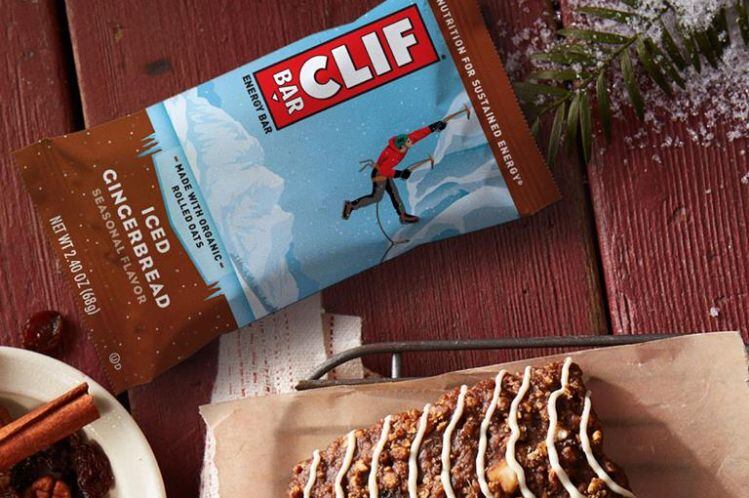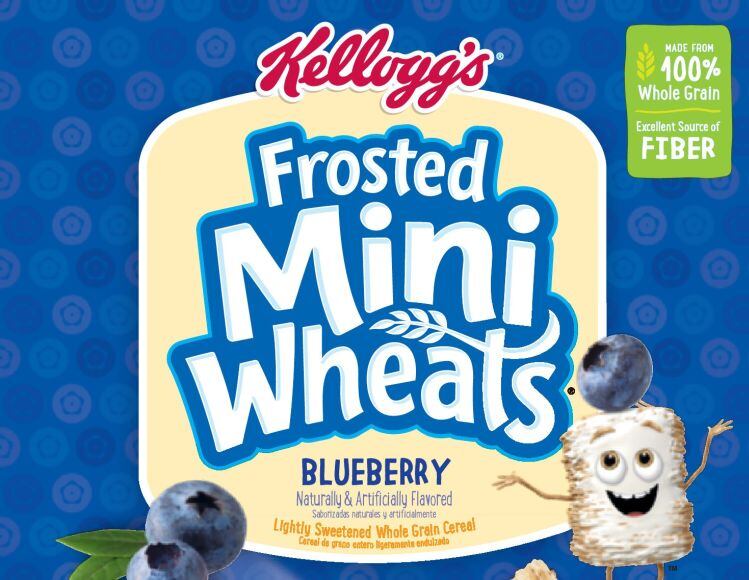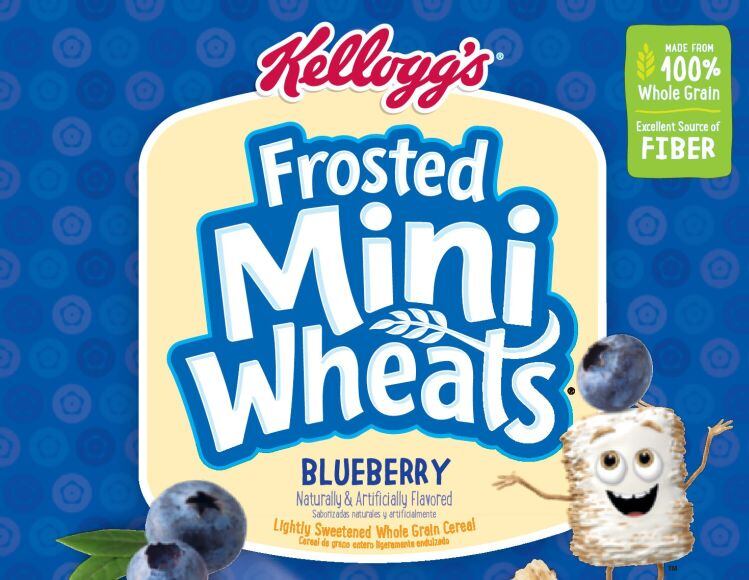The decision to settle comes two months after a similar case vs General Mills was dismissed by a different judge in the same district in northern California, who argued that consumers “cannot plausibly claim to be misled.” However, a near identical case vs Clif Bar was allowed to proceed.
In the lawsuit* vs Kellogg - originally filed in August 2016 - plaintiff Stephen Hadley took issue with terms including ‘healthy,’ ‘nutritious,’ ‘wholesome,’ and ‘lightly sweetened’ on selected Kellogg’s cereals, which he argued implied they were low in sugar “when they actually are composed of 18% to 40% added sugar.”
Kellogg, however, said it had “never advertised these breakfast products as ‘low sugar’ or ‘reduced sugar.’ Nor has it hidden the sugar content. To the contrary, as every consumer knows, the products’ sugar content is clearly listed on the Nutrition Facts panel. And the names of these products — such as Krave S’Mores and Cinnamon Roll Frosted Mini Wheats — obviously alert consumers that these sweet-tasting items have some added sugar.”
It also noted that the products contained “on average significantly less than a third of the FDA’s daily recommended value for added sugar (50g). And since breakfast is only one of three meals that people typically eat, plaintiff’s conclusory allegation that the products contain ‘excessive’ added sugar is implausible.”
$20m settlement fund and injunctive relief
After more than three years, the parties have agreed to a settlement – which has yet to be approved by the court – whereby Kellogg will allocate $20m to a settlement fund enabling shoppers to claim back money or vouchers.
It has also agreed to:
- Remove ‘Heart Health’ claims on Smart Start, and limit the use of heart health claims on Raisin Bran for at least two years;
- Remove the phrase ‘Lightly Sweetened’ from Frosted Mini-Wheats and Smart Start for at least three years;
- Refrain from using the phrase ‘No High Fructose Corn Syrup’ for at least three years;
- Use the words ‘Wholesome,’ ‘Nutritious ‘ or ‘Benefits’… only in connection with a specific ingredient or nutrient, and not to describe any Class Product as a whole, for at least three years; and
- Use the word ‘Healthy’ only as an implied nutrient content claim (only in connection with an explicit or implicit claim about a nutrient of the type required to be labeled in the Nutrition Facts Box).
How much sugar is in the Kellogg's cereals referenced in the lawsuit?
- Kellogg's Raisin Bran: 18g sugar/serving, 37.9% calories from sugar
- Kellogg's Raisin Bran Crunch: 19g sugar/serving, 40% calories from sugar
- Kellogg's Frosted Mini-Wheats, blueberry: 12g sugar/serving, 25.3% calories from sugar
- Kellogg's Smart Start cereal: 18g sugar/serving, 30% calories from sugar
Attorney: ‘If you’re looking at going to a jury trial on a certified claim and there’s even a 5% chance of a disastrous verdict, no one would take that risk’
So what do attorneys make of the fact that Kellogg opted to settle this lawsuit, one of several ‘excessive’ sugar suits still moving through the courts?
In cases like this, the risks of going to trial – and potentially losing - significantly outweigh the cost of settling, given that Judge Koh had already certified a class and the Ninth Circuit Court of Appeals declined to look at the case, noted Dale Giali, partner in the LA office of law firm Mayer Brown (which is not involved in the case) who has represented dozens of food manufacturers in false advertising lawsuits.
“If you’re Kellogg and you’re looking at going to a jury trial on a certified claim and there’s even a 5% chance of a disastrous verdict, no one would take that risk,” he told FoodNavigator-USA.
“So you try and figure out how much is my ticket out of this haunted house going to cost.”
What happens to money allocated to settlement funds?
A portion of it pays off the plaintiff's attorneys, some goes to cover the cost of setting up and administering consumer claims, and the rest is available for consumers.
The claims rate is typically very low for such cases as most consumers don't know or care about the case in question and the amounts of money they are entitled to claim back are typically small. However, with the advent of social media (click here to make your claim) it's becoming easier to make claims, which can increase participation.
If there is money left in the pot after consumers have been given a time window for making claims, this is sometimes given to a charity connected to the issue at hand, and in some cases - such as the Kellogg settlement - shared between consumers who have filed a claim.
Unclaimed funds very rarely revert back to the defendant.
‘Everyone knows that Frosted Mini Wheats have got sugar in them’
He added: “I was down on this case from the beginning, as it just looked like another lawyer-led shakedown. Everyone knows that Frosted Mini Wheats have got sugar in them. Even the picture shows a piece of cereal covered in sugar, and no one needs an attorney to point that out.
“And even with the label changes, no consumer is going to be more or less educated about what it is they are buying.”
That said, any food manufacturer that doesn’t want to be at the receiving end of a false advertising lawsuit should think extremely carefully about any claims they make on products containing added sugar, he said. “No question this will get the attention of food manufacturers.”
In large part, how other such cases will play out “depends on who the judge is and how that judge sees the issues,” added Giali, who noted that Judge Lucy Koh (who is handling the Kellogg case) significantly pared down the claims before certifying a class of consumers.
“This case started with something like 50 products and 30 labels claims, so what she ended up certifying as a class was a fraction of that.”
Kellogg did not immediately respond to a request for comment.
**The case is Hadley v. Kellogg Sales Company, 5:16-cv-04955, filed in the northern district of California on August 29, 2016.
The law and added sugar

While there is no specific regulation that disqualifies firms from stating or implying that a product is healthy or nutritious based on its sugar content (conditions of use for the nutrient content claim ‘healthy’ don’t mention sugar), plaintiffs in a recent spate of added sugar lawsuits argue that federal regulations enshrined in various state laws require that labels are not false or misleading.
Consumers, they add, do not realize that a quarter to a third of calories in some cereals and snack bars come from added sugar:
“Statements that these products are ‘healthy,’ ‘nutritious,’ or ‘wholesome’ are false, or at least highly misleading, because, due to their high sugar content, consumption of these products is decidedly unhealthy.”
The FDA has set a daily reference value of 50g for added sugar, or 10% of calories based on a 2,000-calorie diet to be included on the new-look Nutrition Facts panel. It does not define ‘high’ or ‘low’ sugar, and only sets conditions of use for ‘reduced/less/lower sugar’ claims.


